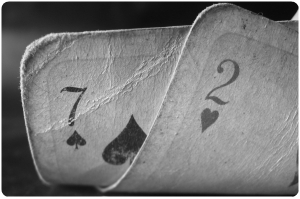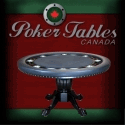 It takes one to know one. Bluffing is a risky but sometimes effective way to win a game of poker, though it requires some skill to be able to ‘bluff’ your way through a game of poker unnoticed by your opponents.
It takes one to know one. Bluffing is a risky but sometimes effective way to win a game of poker, though it requires some skill to be able to ‘bluff’ your way through a game of poker unnoticed by your opponents.
One of the key elements to bluffing successfully is knowing how to recognise what the signs of bluffing are, so you can avoid doing them yourself. Sometimes referred to as ‘tells’, this is the analysing side of poker when you can assess what the give-away signs of bluffing are, and even use them to your advantage when you’re not bluffing but want someone to believe that you are.
Learn to read body language. Bluffing is similar to lying and revealing signs can be; lip movements, eye twitching, flaring of the nostrils, scratching, holding of breath or hand movements. The bluffer may also try to cover part of their face, possibly with a hand of an item of closing. Be the master of your domain by tuning in to your own body language when you’re lying and learning to hide it or use it to your advantage.
Humans are revealing characters and we can’t help but to reveal our intentions through subconscious movements and body gestures. Watch carefully how chips are put down. They may be slid forwards, slapped on the table with force, placed down gently, counted piece by piece; these are all signs which can be used to assess how the player feels about their cards. If a player places chips closer to themselves, this may be a subconscious indication that they believe the money is coming back to them. Alternatively, if they place the chips far away from themselves, this may mean that their chips are going away from them, a sign that they may be bluffing.
Learn to read opposites; if your opponent is acting strong, they are likely the opposite. They may force a smile when hitting a certain card, stare strongly at you as you place a card or splash the pot. These could all be signs of bluffing that they’re trying to mislead you with. Bluffing is about recognising the common signs of the ‘tells’ and using those signs to your advantage.

